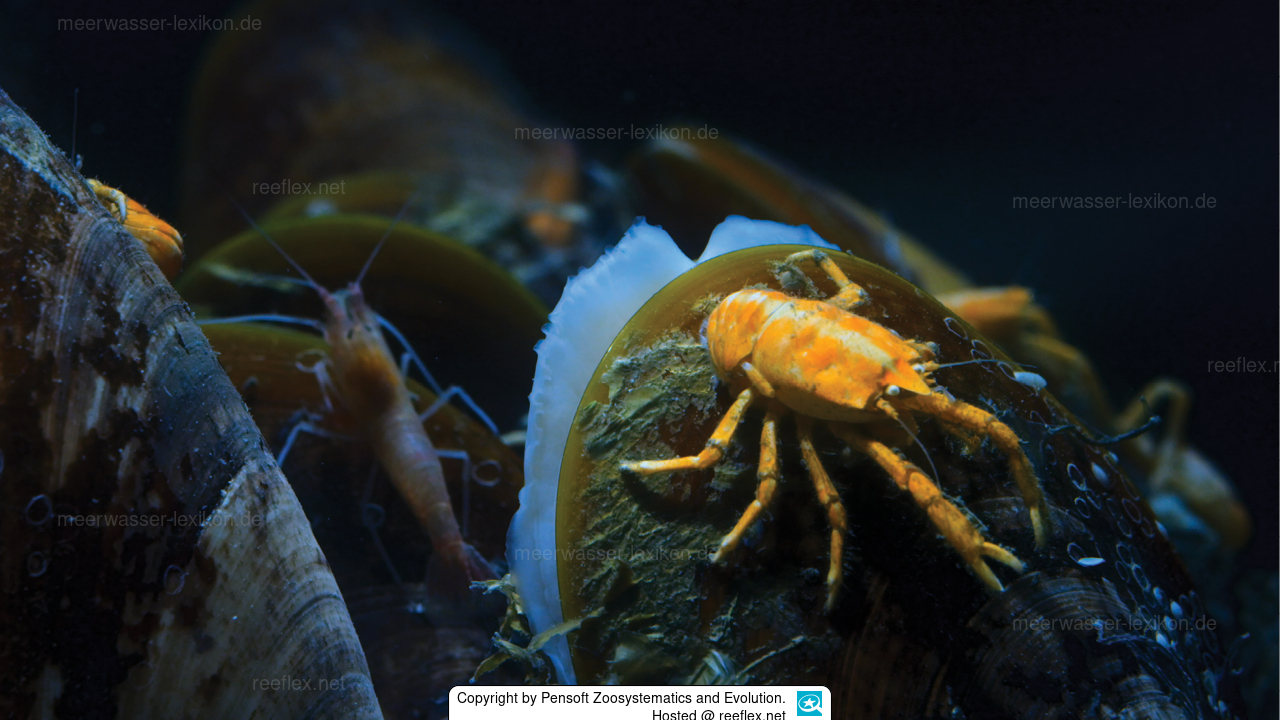Info
Specimens of Munidopsis sedna have been collected at cold springs or in association with spring communities in the vicinity of brine pools and cold springs in Green Canyon in the Gulf of Mexico.
Munidopsis sedna appears to be endemic to the western Atlantic.
Extensive research has been conducted for accurate identification:
morphological analyses, including micro-CT scans, multilocus molecular phylogeny and mtDNA phylogeography, and ecological data derived from in situ observations and geographic distribution patterns.
Coloration : Carapace and abdomen orange with a white stripe in the midline.
The eyes are light orange, the pereopods are also orange or light orange, distally whitish.
Etymology
In Inuit mythology, Sedna is the goddess of the sea and sea creatures, also known as the mother or mistress of the sea.
Literature reference:
Rodríguez-Flores PC, Ambler JW, Nizinski MS (2024)
Integrative taxonomy reveals a new species of deep-sea squat lobster (Galatheoidea, Munidopsidae) from cold seeps in the Gulf of Mexico.
Zoosystematics and Evolution 100(4): 1243-1257. https://doi.org/10.3897/zse.100.127169
This is an open access article distributed under the terms of the CC0 Public Domain Dedication.
Munidopsis sedna appears to be endemic to the western Atlantic.
Extensive research has been conducted for accurate identification:
morphological analyses, including micro-CT scans, multilocus molecular phylogeny and mtDNA phylogeography, and ecological data derived from in situ observations and geographic distribution patterns.
Coloration : Carapace and abdomen orange with a white stripe in the midline.
The eyes are light orange, the pereopods are also orange or light orange, distally whitish.
Etymology
In Inuit mythology, Sedna is the goddess of the sea and sea creatures, also known as the mother or mistress of the sea.
Literature reference:
Rodríguez-Flores PC, Ambler JW, Nizinski MS (2024)
Integrative taxonomy reveals a new species of deep-sea squat lobster (Galatheoidea, Munidopsidae) from cold seeps in the Gulf of Mexico.
Zoosystematics and Evolution 100(4): 1243-1257. https://doi.org/10.3897/zse.100.127169
This is an open access article distributed under the terms of the CC0 Public Domain Dedication.







 Pensoft Zoosystematics and Evolution
Pensoft Zoosystematics and Evolution




